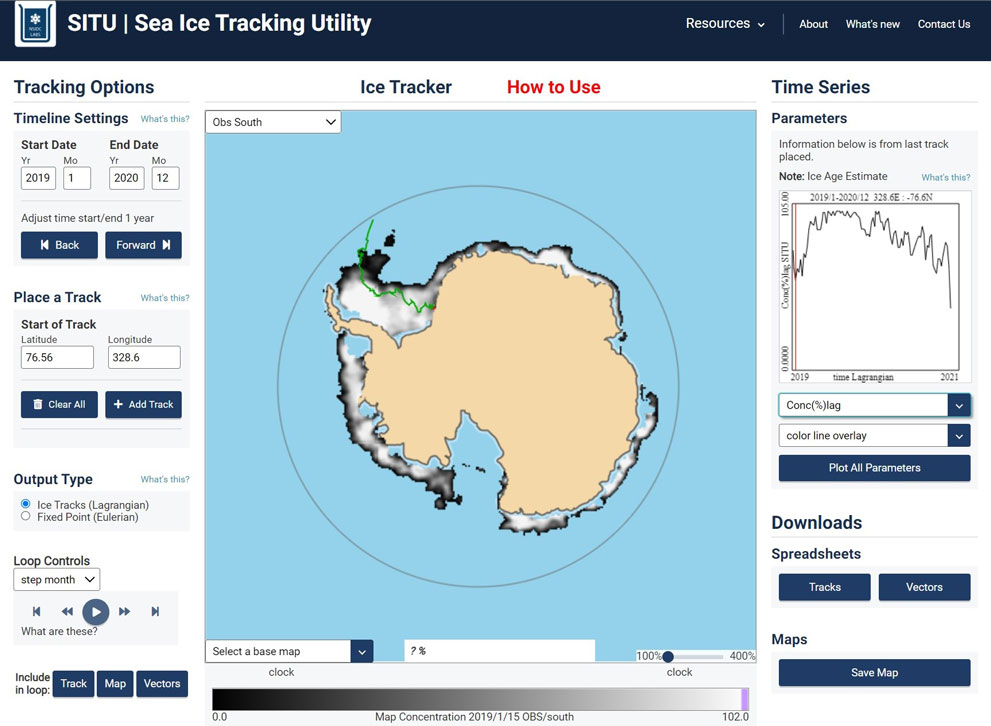Shackleton's Endurance: Where Could the Floe Go?
By Stephanie Pfirman
A new simulation tool lets viewers follow sea ice movements.
August 3, 2022
The Long View Physics Cartography
Record breaking low Antarctic sea ice cover led to the finding of the Endurance shipwreck in March 2022, amazingly well preserved on the sea floor since it was crushed by the ice and sunk on November 21, 1915.
Following this catastrophe, Sir Ernest Shackleton—the expedition leader—led his 27-man crew on an extraordinary journey of survival, first navigating three lifeboats to Elephant Island, then on with a total crew of six on a 1,300 kilometer boat journey to South Georgia. Once there, they had to cross a mountain chain before finally reaching the Grytviken whaling village on the other side of the island. Shackleton eventually managed to rescue all of his crew who had been forced to live on Elephant Island while he sought help, one of the truly heroic expeditions of all time.
Analysis of potential alternative trajectories—given what we know about ice conditions since 1979—shows that although Shackleton was both lucky and unlucky with the environmental conditions, he and his crew only survived through amazing feats of perseverance, as well as navigational and operational skill.
But the low ice conditions that allowed for the wreck of the Endurance to be located in 2022 are in contrast with the recent ice conditions of 2019 and 2020, which could have delivered not just the crew, but also the intact Endurance, to within about 831 kilometers of Grytviken.
You can explore this recent drift yourself—as well as other alternatives from 1980 to 2020—using the new version of the Ice Tracker referenced in Going with the Floe (November–December 2009). SITU: Sea Ice Tracking Utility, developed in collaboration with Garrett Campbell, Bruno Tremblay, Bob Newton, Walt Meier, Chuck Fowler, and Patricia DeRepentigny, allows you to track past sea ice trajectories in the Antarctic as well as both past and future trajectories in the Arctic.

Image courtesy of the authors; opening image Frank Hurley (1885-1962) / National Library of Australia Hurley negative collection.
American Scientist Comments and Discussion
To discuss our articles or comment on them, please share them and tag American Scientist on social media platforms. Here are links to our profiles on Twitter, Facebook, and LinkedIn.
If we re-share your post, we will moderate comments/discussion following our comments policy.